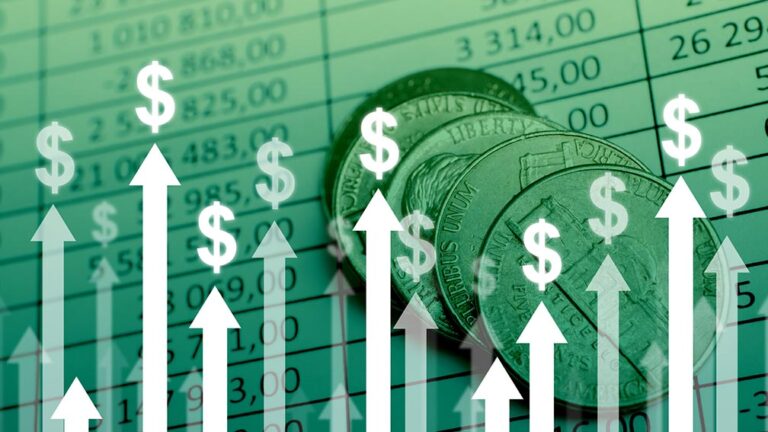LITTLE ROCK, Ark. — “I see the bad moon a-rising, I see trouble on the way.” Those words, penned and sung by John Cameron Fogerty of the group Creedence Clearwater Revival, made for a great song.
They’re also a pretty good predictor of where the U.S. economy is headed.
Inflation topped 9% in June of this year, the highest it’s been in 40 years. While the annual rate eased slightly in the months following, the economy isn’t responding as predicted. Two rate hikes by the Federal Reserve, increasing interest rates by a total of 1.5%, have hardly made a dent in the increases. The Fed is expected to announce a third consecutive hike of 75 basis points, possibly 100, when it meets Sept. 21.
As the COVID-19 pandemic began to wind down, consumers returned to work. And as incomes resumed or increased, so did spending, stimulating a dormant economy.
Inflation, however, has taken its toll.
Real disposable personal income — the amount an earner has left to spend after taxes and adjusting for inflation — has trended downward since April 2021. A dollar held in July 2021 buys 85 cents’ worth of product today, on average.
That means that families are paying more for necessities like food and fuel and have less left over to purchase goods.
The gross domestic product (GDP) is often used as an indicator of an economy’s health. When times are good, the GDP grows. When it isn’t growing, the economy is shrinking.
Most economists claim that two consecutive quarters of decline mean a recession is under way. Real GDP declined in the first two quarters of this year; predictions are for it to grow modestly in the third quarter before declining again for two more quarters.
But there is a more reliable indicator — the inverted yield curve. While those words may sound like investor-speak, they actually aren’t hard to understand.
It works like this: When the U.S. government needs a loan, one way it borrows is by selling Treasury notes, often called T-Notes. These earn a fixed rate of interest until maturity, which can take from one to 30 years. Typically, the longer the lender (the buyer of the T-Note) is willing to let the government keep the money, the higher the interest rate the government is willing to pay. On a graph, the line would be a curve, rising and going to the right. This is considered a “normal” yield curve.
Sometimes, however, things get squirrely, so to speak.
Investors lose their confidence that the government will be able to make good on longer notes. They want to buy T-notes that mature sooner. When that happens, interest paid on short-term notes rises, while interest on long-term notes declines. When interest on the short-term notes is about the same as for long-term notes, the graph looks like a straight line from left to right — a “flat” yield curve.
However, when interest on the short-term notes is higher than it is for the longer-term notes, the line on the graph goes down and right and is known as an “inverted” yield curve. The yield from two-year notes is compared to the yield on 10-year notes.
According to an article by James McWhinney posted on Investopedia in June, an inverted Treasury yield curve “is one of the most reliable leading indicators of an impending recession.” It’s happening now. The Treasury yield curve has been inverted for more than two months as of this writing.
The news isn’t all bad, however.
Unemployment remains at near-historic lows, coming in at 3.7% in August. That’s significantly better than the 14.7% unemployment reported in April 2020, when COVID related shutdowns were occurring.
While it’s a good thing so many people are working, it puts pressure on the economy in terms of wage inflation. When workers are few, wages rise, helping to fuel inflation as companies raise prices for their goods and services to cover higher labor costs.
The stock market has taken a beating in the past month and continues to fall, cheapening investments and providing less income for investors.
Fuel prices are still high compared to 2020 but have come down considerably. Every Monday morning the U.S. Energy Information Administration reports average gasoline and diesel prices for the nation and broken down by region.
During the week of June 20, 2022, the national average diesel price peaked at $5.81 per gallon, reaching $6.91 per gallon in California.
For the week of Aug. 15, the national average price had fallen to $4.91, a welcome 90-cent decline. A month later, it had climbed to $5.08 — still better, but still high enough to cause pain for truckers.
Despite the gloom, the trucking industry is still benefiting from plentiful freight and higher rates, provided that fuel surcharges are in place to cover cost increases. Spot rates have stagnated and begun declining, but still remain higher than they were before the pandemic. Contract rates are just beginning to start downward.
Kenny Vieth, president and senior analyst at industry forecaster ACT Research, thinks current conditions may help keep a recession from being as bad as it could be.
“We believe wage inflation needs to moderate before the Fed can begin turning away from tighter monetary policy,” he said in a recent news release. “As long as the jobs report remains strong, wage inflation may prove stubbornly persistent — which could in turn lead to a more-aggressive-for-longer rate hikes.”
Vieth identified three factors that could help mitigate a downturn, at least for trucking.
“Carrier profits and profitability were at record levels in 2021, and contract freight rates are still expected to rise by high single digits this year,” he explained. “Vehicle demand remains healthy, if moderating from here, with pent-up demand and low inventories expected to help mitigate the depth of the downturn.”
And, he warned, requirements for reduced emissions from diesel engines will have an impact.
“Finally, some prebuy activity is anticipated prior to the implementation of CARB’s Clean Truck mandate, entering a queue already filled with pent-up demand,” he said. “States representing about 10% of industry demand will be adopting CARB mandates in both 2024 and 2025.”
While the economy is expected to struggle in the first half of 2023, there will still be money to be made by carriers and by the manufacturers who sell them trucks.
Cliff Abbott is an experienced commercial vehicle driver and owner-operator who still holds a CDL in his home state of Alabama. In nearly 40 years in trucking, he’s been an instructor and trainer and has managed safety and recruiting operations for several carriers. Having never lost his love of the road, Cliff has written a book and hundreds of songs and has been writing for The Trucker for more than a decade.















